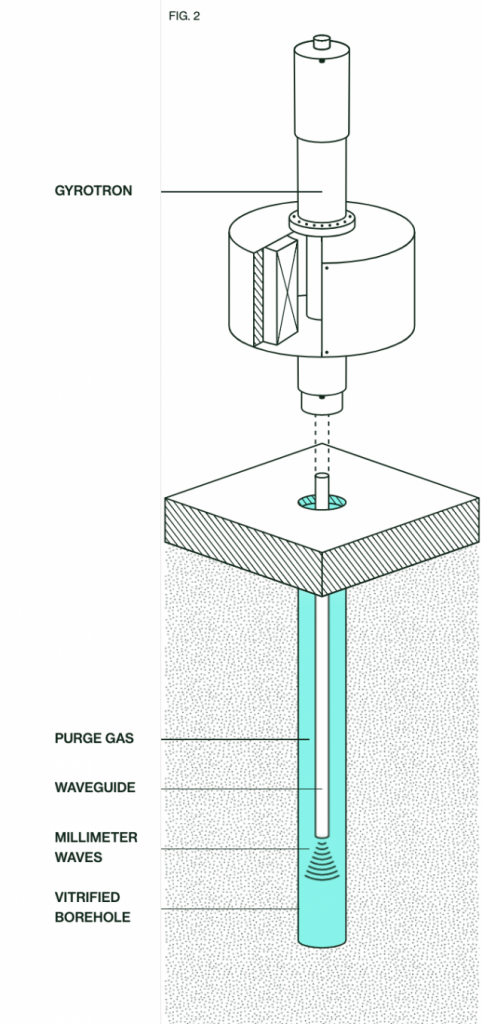You may have heard of the Boring Company, one of Elon Musk’s brainchildren. The Boring Company’s mission is to solve urban traffic and pollution problems by building tunnels using technology that rapidly bores through the earth. Musk’s tunnel machines work on the horizontal. The other day, I came across a company that’s also doing boring work, only Quaise Energy is going vertical, using technology that produces fusion power, to bore deep down into the earth to tap the vast store of geothermal energy that lies below.
Quaise, which is an MIT spinoff:
…plans to dig some of the deepest boreholes in history to reach rocks that can exceed temperatures of 1,000 degrees and surface a kind of heavy steam that has the potential to provide enormous quantities of energy. By the end of the decade, their hope is to capture the steam and use it to run turbines at power plants. (Source: Boston Globe)
The idea of going after geothermal energy is nothing new. Shallow geothermal wells are drawn on to provide energy for usages such as heating buildings. And people have been soaking in geothermal spas, like Iceland’s Blue Lagoon, for centuries. But deep geothermal, tapping into sources that are far hotter than those captured by shallow approaches, produce far more energy. A shallow geothermal well may heat a building; deep geothermal can heat industrial scale networks, and can produce electricity. Previous efforts to drill deep have been long-haul and costly. One experiment, conducted by the Soviet Union back when there was a Soviet Union, lasted two decades and “only” made it down 7.5 miles.
industrial scale networks, and can produce electricity. Previous efforts to drill deep have been long-haul and costly. One experiment, conducted by the Soviet Union back when there was a Soviet Union, lasted two decades and “only” made it down 7.5 miles.
Conventional drills had difficulty cutting through dense rock at such depths, where the pressure increases immensely and temperatures are scorching. The heat and density of the rocks required frequent replacement of drill bits, prolonging the effort and jacking up the costs.
“Using a special laser that they say is powerful enough to blast through granite and basalt,” Quaise aims to drill down 12 miles. And unlike the two decades that the Soviet program took to plumb the deaths, the folks at Quaise believe they’ll be able to reach an even deeper level, and do it in 100 days.
Quaise’s gyrotron:
…creates electromagnetic beams of millimeter waves powerful enough to heat plasma to more than 100 million degrees, easily burned through granite and other dense rock found deep underground. In laboratory tests, the high-powered, high frequency waves can melt and vaporize the rocks.
And by using a laser beam to do the boring, the drill bit replacement problem – which slows the drilling process down – is eliminated.
There are plenty of risks. Efforts to drill for geothermal have triggered non-trivial seismic episodes. And there are concerns that arsenic, mercury, and other elements will seep into drinking water supplies. Then there’s the risk that toxic elements (think boron) and greenhouse gases could escape during the drilling/extraction process, polluting the atmosphere.
On the plus side, Quaise says that their approach can utilize existing fossil fuel infrastructure (from drilling rigs to power plants), and make use of the existing oil and gas workforce, who have skills that will be easily transferrable to this new way of filling energy needs. And, unlike fossil fuels, geothermal is renewable.
So, while there are lots of engineering challenges to be overcome, the reward – a readily-scalable, sustainable source of renewable energy – seems to outweigh the risks.
Boring technology, which is really rather interesting, may be the energy answer the world is looking for.
